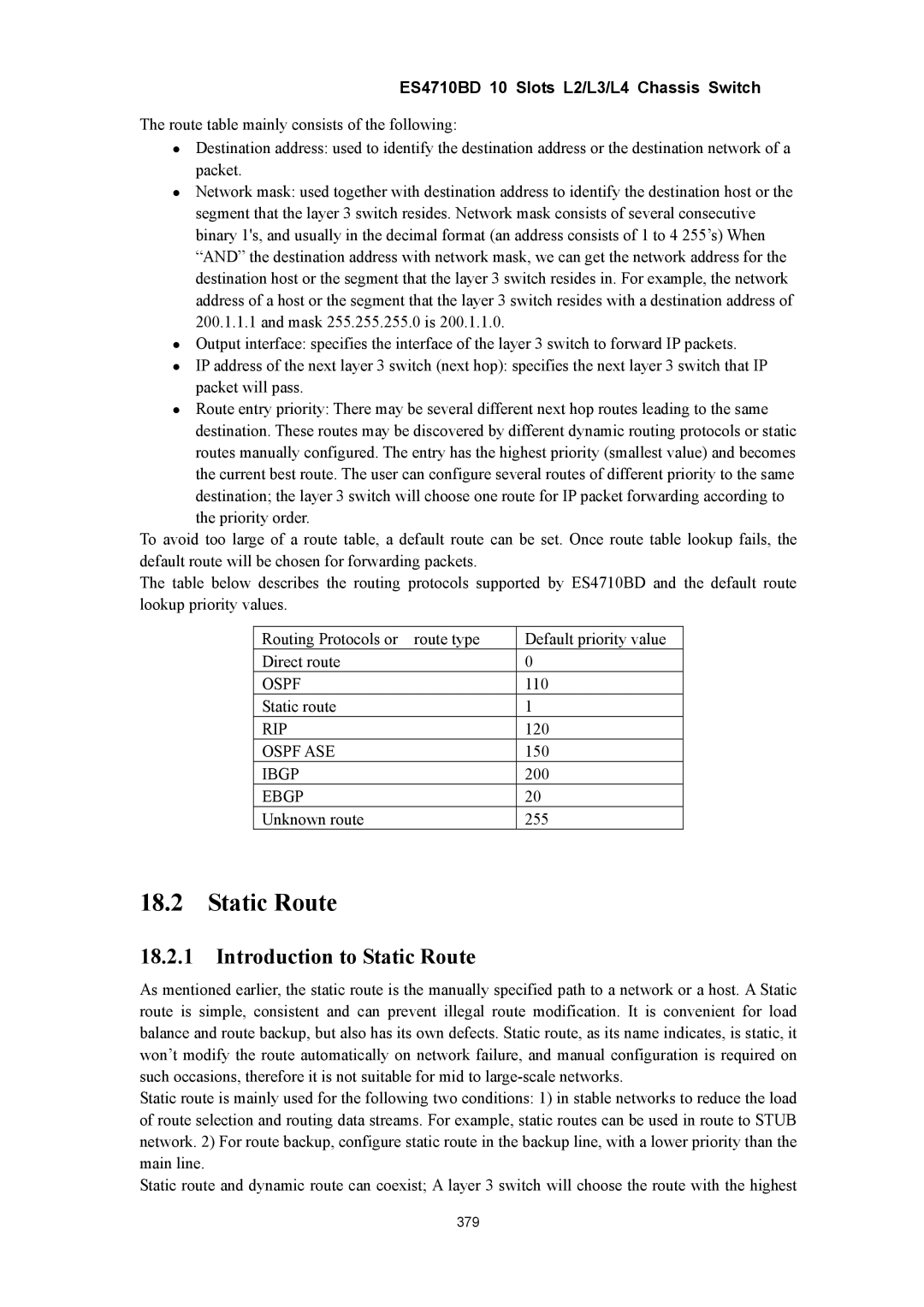ES4710BD 10 Slots L2/L3/L4 Chassis Switch
The route table mainly consists of the following:
zDestination address: used to identify the destination address or the destination network of a packet.
zNetwork mask: used together with destination address to identify the destination host or the segment that the layer 3 switch resides. Network mask consists of several consecutive binary 1's, and usually in the decimal format (an address consists of 1 to 4 255’s) When “AND” the destination address with network mask, we can get the network address for the destination host or the segment that the layer 3 switch resides in. For example, the network address of a host or the segment that the layer 3 switch resides with a destination address of 200.1.1.1 and mask 255.255.255.0 is 200.1.1.0.
zOutput interface: specifies the interface of the layer 3 switch to forward IP packets.
zIP address of the next layer 3 switch (next hop): specifies the next layer 3 switch that IP packet will pass.
zRoute entry priority: There may be several different next hop routes leading to the same destination. These routes may be discovered by different dynamic routing protocols or static routes manually configured. The entry has the highest priority (smallest value) and becomes the current best route. The user can configure several routes of different priority to the same destination; the layer 3 switch will choose one route for IP packet forwarding according to
the priority order.
To avoid too large of a route table, a default route can be set. Once route table lookup fails, the default route will be chosen for forwarding packets.
The table below describes the routing protocols supported by ES4710BD and the default route lookup priority values.
Routing Protocols or route type | Default priority value |
Direct route | 0 |
OSPF | 110 |
Static route | 1 |
RIP | 120 |
OSPF ASE | 150 |
IBGP | 200 |
EBGP | 20 |
Unknown route | 255 |
18.2Static Route
18.2.1Introduction to Static Route
As mentioned earlier, the static route is the manually specified path to a network or a host. A Static route is simple, consistent and can prevent illegal route modification. It is convenient for load balance and route backup, but also has its own defects. Static route, as its name indicates, is static, it won’t modify the route automatically on network failure, and manual configuration is required on such occasions, therefore it is not suitable for mid to
Static route is mainly used for the following two conditions: 1) in stable networks to reduce the load of route selection and routing data streams. For example, static routes can be used in route to STUB network. 2) For route backup, configure static route in the backup line, with a lower priority than the main line.
Static route and dynamic route can coexist; A layer 3 switch will choose the route with the highest
379
